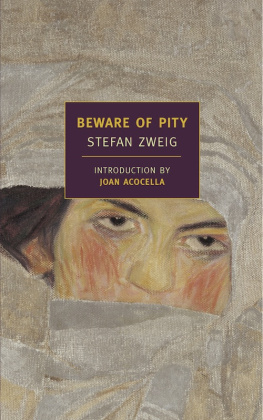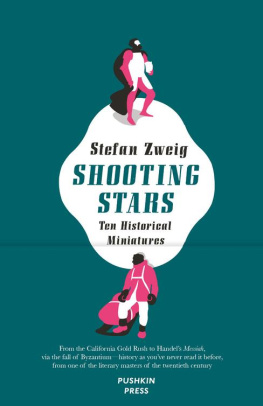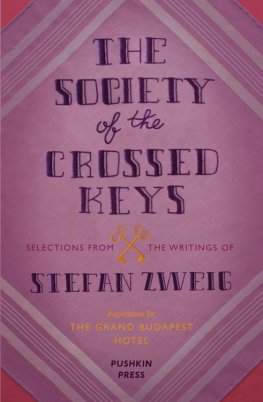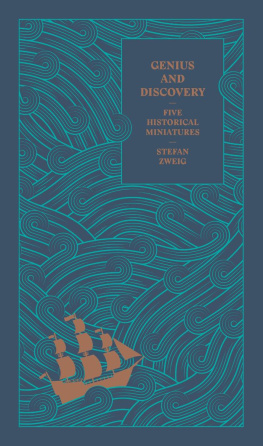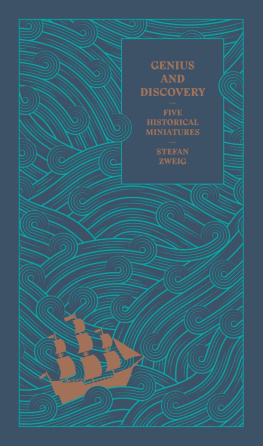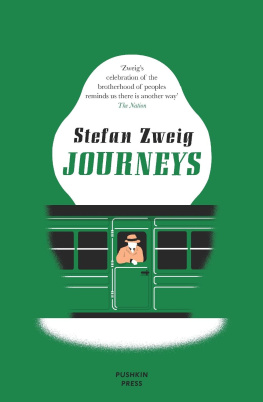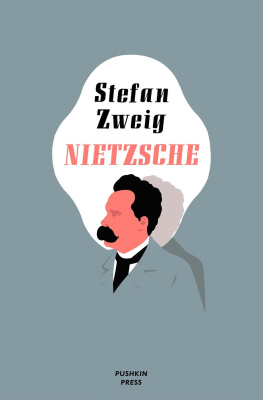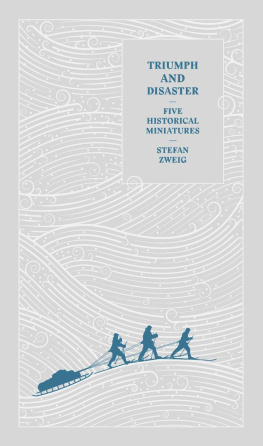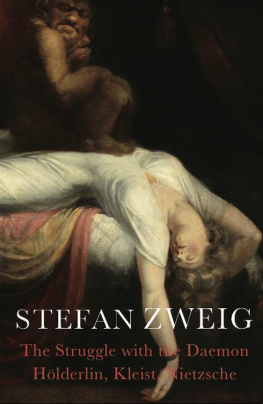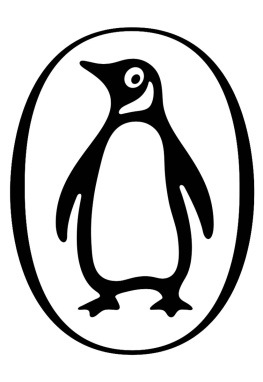Stefan Zweig - Encounters and Destinies
Here you can read online Stefan Zweig - Encounters and Destinies full text of the book (entire story) in english for free. Download pdf and epub, get meaning, cover and reviews about this ebook. year: 2020, publisher: Steerforth Press, genre: Detective and thriller. Description of the work, (preface) as well as reviews are available. Best literature library LitArk.com created for fans of good reading and offers a wide selection of genres:
Romance novel
Science fiction
Adventure
Detective
Science
History
Home and family
Prose
Art
Politics
Computer
Non-fiction
Religion
Business
Children
Humor
Choose a favorite category and find really read worthwhile books. Enjoy immersion in the world of imagination, feel the emotions of the characters or learn something new for yourself, make an fascinating discovery.
- Book:Encounters and Destinies
- Author:
- Publisher:Steerforth Press
- Genre:
- Year:2020
- Rating:5 / 5
- Favourites:Add to favourites
- Your mark:
- 100
- 1
- 2
- 3
- 4
- 5
Encounters and Destinies: summary, description and annotation
We offer to read an annotation, description, summary or preface (depends on what the author of the book "Encounters and Destinies" wrote himself). If you haven't found the necessary information about the book — write in the comments, we will try to find it.
Encounters and Destinies — read online for free the complete book (whole text) full work
Below is the text of the book, divided by pages. System saving the place of the last page read, allows you to conveniently read the book "Encounters and Destinies" online for free, without having to search again every time where you left off. Put a bookmark, and you can go to the page where you finished reading at any time.
Font size:
Interval:
Bookmark:
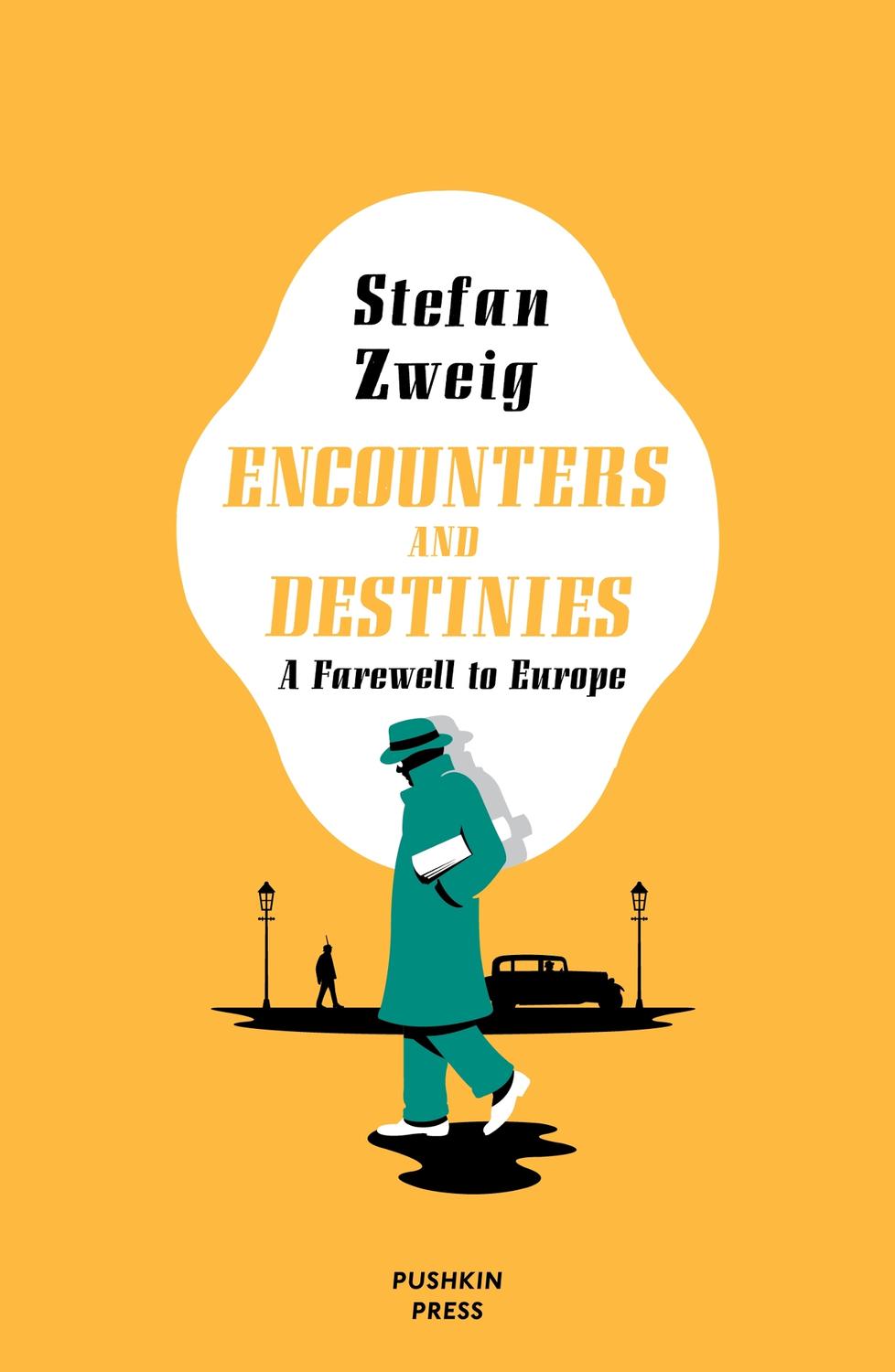
At a time of monetary crisis and political disorder, of mounting border controls and barbed-wire fences Zweigs celebration of the brotherhood of peoples reminds us that there is another way
The Nation
Zweigs accumulated historical and cultural studies remain a body of achievement almost too impressive to take in
Clive James
Stefan Zweigs time of oblivion is over for good its good to have him back
Salman Rushdie, The New York Times
Zweig is the most adult of writers; civilised, urbane, but never jaded or cynical; a realist who nonetheless believed in the possibilitythe necessityof empathy
Independent
Zweig deserves to be famous again, and for good
Times Literary Supplement
Art is an eternal war, never an end, always a relentless beginning
zweig on toscanini
How can it be, one might be tempted to ask, that none of Stefan Zweigs corpus of elegant eulogies, elegies and tributes to his fellow artists, musicians and writers has ever appeared in the English language until now? After all, a volume entitled Souvenirs et Rencontres, which contained a number of those texts you are about to encounter here, appeared in France as early as 1951, only nine years after Zweigs suicide in Brazil. We, however, in time-honoured fashion, have lagged behind. Despite the recent Zweig renaissance in the Anglophone world, there still remain a vast number of texts which currently lie beyond the reach of readers, glittering like an inviting estuary that imperceptibly meets the wider ocean of European literature. Here are some of them, a rich selection of those that concern the authors powerful memories of fellow travellers across European culture in the twentieth centurysome, but by no means all, for Zweig relentlessly penned tributes both to his contemporaries and to those he considered great masters of the past, or artists who had represented something personally significant for him in his evolution as a writer. I have selected from this wider body of work texts which to me seemed most intriguing, engaging and vital, or which might harbour some prescience of our own time. I have also chosen a range of figures across the arts which includes those who were famous at Zweigs time of writing and still are today, and others to whom our epoch has shown less generosity of spirit, either for sound reasons or no clear reason at all. One of these is the Belgian poet Emile Verhaeren. The substantial and eloquently crafted memorial which Zweig dedicates to him I have included partly because it is considered as one of Zweigs most successful pieces of biographical writing, and although admiring of his subject, eschews the hagiographic style of his earlier biography of Verhaeren (1910). It is important for readers to understand the central role Verhaeren played in Zweigs early European trajectory, and the friendship which was maintained until the rupture of war in 1914 and the Belgians untimely death in Rouen two years later.
Zweigs book-length biographies are well known if not widely read today, partly due to the lack of modern translations and some of the older ones being out of print. Rather frustratingly, these are the most relevant for our own time. I think of Erasmus of Rotterdam from 1934, and The Right to Heresy: Castellio against Calvin from 1936, back-to-back power plays between tyrannical figures or the state and freedom-loving individuals, with Luther and Calvin standing in for Hitler and Erasmus and Castellio for Zweig. These were symbolic warnings from history superimposed on the totalitarian present. But this compulsion for literary biographies had begun much earlier with a series of monographs. In 1905, Zweig had published an important essay on the French poet Verlaine and in 1910 his major biography of Verhaeren appeared in Germany, soon being translated into French and English. The pre-war golden age of 190014 was the time of Verhaerens greatest influence; he was one of the most visible and sought-after European poets, filling auditoriums across the continent as far as Moscow. In addition to the biography, Zweig flung all his energies into establishing the Belgians reputation as a major poet in Germany, translating, albeit rather freely, certain works himself, and even attempted to corral a coterie of disciples which included Rilke to translate into German between them a multi-volume Collected Poems of Verhaeren; but this crowning moment for the Belgian poet and high priest of the pan-Europeans was abandoned due to the outbreak of hostilities in 1914. The impulsion to ardently support and promote those writers Zweig particularly valued, to render biographical portraits as confirmations of his admiration, continued till the end of his life.
For example, in Brazilian exile, mired in morbid depression over the perceived annihilation of Europe, he by chance rediscovered Montaigne, seizing on him as his last guiding master, and set out to write the necessary tribute. Shorn of his European friends, desperate for a supportive and sympathetic voice from history, Zweig found in the lonely vigil, the apartness of Montaigne something he needed, both a fraternal counsel and an exemplary advocate of free thought. It seems that whenever Zweig was touched at the deepest point by another writer or artist, their life story or creative example, he felt an overwhelming urge to explore them further through such portraits, to flesh out the elements of his veneration. This is why, when exiled in London during the 1930s, he was often installed in the British Museum library gathering material for the works on Marie Antoinette, Magellan or Mary Queen of Scots. The public or private library was essentially Zweigs club; he had to be surrounded by books, have access to books, and whenever he was about to embark on a project he would ask his wife, Friderike von Winternitz, to order a whole list of secondary literature on his subject. A poignant photograph of Zweig taken in the summer of 1940 shows him descending the empty steps of the New York Public Library. As is well known, Zweig was an astute collector of rare books and manuscripts, some of which were lost in the traumatic years of journeying, but a significant portion of which survived and, fittingly, are now safeguarded in a library, the British Library in London. Beyond the book-length biographies, Zweig also wrote countless portraits of writers outside his own time, some almost expected and others intriguing: Goethe, Chateaubriand, Rimbaud, Dante, Jaurs, Baudelaire, Sainte-Beuve
After the trauma of the 191418 war had faded, Zweigs literary output was beyond prolific. From 1919 to 1934 he based himself in an initially unheated yet palatial villa atop the Kapuzinerberg in Salzburg known as Paschinger Schlssl, but later known as Villa Europa. Here, for fifteen largely stable, trouble-free years, the great and the good of European letters ascended the steep, winding lane of the hill to the gate of No. 5. Though ever on the move, zigzagging the continent, taking advantage of the ever-denser web of Europes railways and making regular trips to Paris, Zurich, Brussels, Rome, Berlin and Vienna, Zweig now had an anchorage, a central base, the well-oiled hub of a many-spoked wheel, not to mention a generously assisting partner who proved highly effective in promotional and organizational terms. Zweigs literary production went up a gear. In these years he wrote the portrait of Marcel Prousts bedridden resistance and Frans Masereels Expressionist craftsmanship, issued fulsome gratitude to Romain Rolland and erected his lyrically decorous memorial to Rilke found here, but he was also busy publishing his finest short stories and novellas. During the 1920s Zweig treated his readers to a procession of great miniatures including
Font size:
Interval:
Bookmark:
Similar books «Encounters and Destinies»
Look at similar books to Encounters and Destinies. We have selected literature similar in name and meaning in the hope of providing readers with more options to find new, interesting, not yet read works.
Discussion, reviews of the book Encounters and Destinies and just readers' own opinions. Leave your comments, write what you think about the work, its meaning or the main characters. Specify what exactly you liked and what you didn't like, and why you think so.


